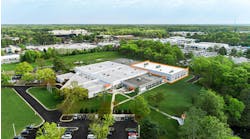| I |
SA-SP100, Wireless Systems for Automation, is a recently formed ISA standards committee formed to address wireless manufacturing and control systems in the areas where the wireless technology is deployed, the technology life cycle for wireless equipment and systems, and application of wireless technology.
According to committee chair Ian Verhappen “The intent of SP100 is to provide our industry the practical information it requires to âensure’ successful implementations of wireless systems in the automation environment.” Verhappen says the committee hopes to proceed in fashion similar to ISA-99, and issue some Technical Reports in 2005 with the potential to make them into full Standards later. “Part of the reason for Technical Reports” says Verhappen, “is that they can be issued more quickly and updated as the technology continues to evolve.”
The new committee identifies the wireless environment including the definition of wireless, radio frequencies (starting point), vibration, temperature, humidity, EMC, interoperability, coexistence with existing systems, and physical equipment location.
Says committee member Dr. Greg Murphy, a 20-year industry veteran now with IEEE, “It’s important we develop the standard so we can address the growing number of industrial control application issues. From network topologies to RFID and environmental conditions there are plenty of things to be concerned about.” Murphy says wireless industrial control system networks represent the future of control. “It’s the next generation of real-time control and I want to help lay the basic foundation for its future.”
ISA’s announcement explains that global short, medium, and long-term technology needs will be incorporated on a non-exclusive technology basis with no bias toward or against a particular wireless technology. The standards themselves may influence the allocation and use of resources and spectrum.
Application of the technology will include:
- Field sensors used for monitoring, control, alarm, and shutdown that can be vertically integrated from field to business systems;
- Wireless technologythe use of which includes real-time field-to-business systems (e.g., wireless equipment interfacing work order systems, control LAN, business LAN, voice); and
- Fluid processing, material processing, and discrete parts manufacturing environments across all industries.
The ISA-SP100 Committee will establish standards, recommended practices, technical reports, and related information that will define procedures for implementing wireless systems in the automation and control environment with a focus on the field level (Level 0). The work should help guidance those responsible for the complete life cycle including the designing, implementing, ongoing maintenance, scalability, or managing manufacturing and control systems, and shall apply to users, system integrators, practitioners, and control systems manufacturers and vendors.
The Committee's stated focus is to improve the confidence, integrity, and availability of components or systems used for manufacturing or control, and provide criteria for procuring and implementing wireless technology in the control system environment. Compliance with the Committee's guidance will improve manufacturing and control system deployment, and will help identify vulnerabilities and address them, thereby reducing the risk of compromising or causing manufacturing control systems degradation or failure.
The committee also stresses that rather than risk duplication of effort, ISA-SP100 will contribute to the efforts of existing committees (e.g., ISA-SP84, ISA-SP99) that wish to incorporate wireless technology in future revisions of their work.



